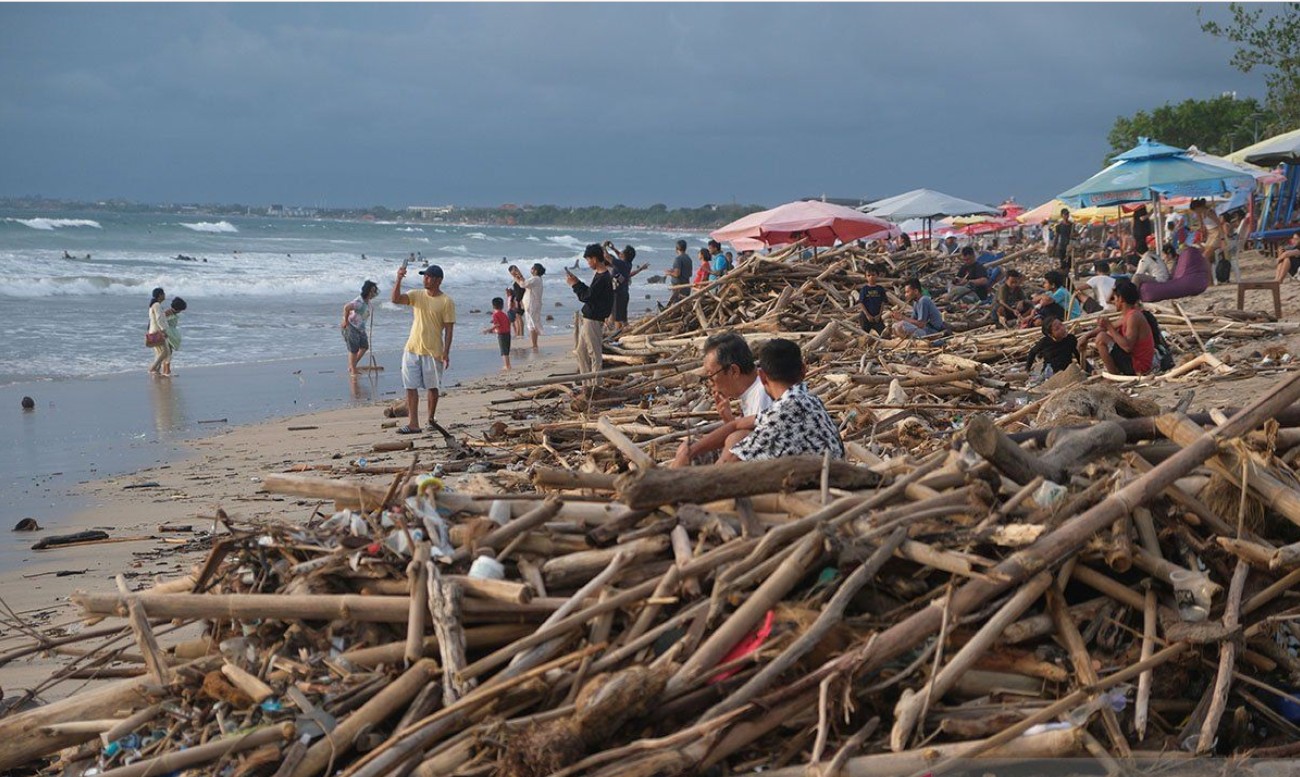Indonesia’s central government has officially launched a revitalization project for Kuta Beach in Badung Regency to restore the beauty of one of Bali’s most iconic coastal landmarks.
Indonesia’s Coordinating Minister for Infrastructure and Regional Development, Agus Harimurti Yudhoyono (AHY), announced that the project will cover the Kuta to Seminyak coastline, stretching approximately 5.3 kilometers, which has been severely eroded in recent years.
According to AHY, Kuta Beach has suffered the worst coastal erosion, with sand receding up to 15–20 meters, dramatically altering its appearance.
“This is part of our infrastructure development effort to preserve nature. It’s not only about protecting our environment from being continually eroded by the sea waves, which can also threaten communities living along the coastline,” AHY said during a media briefing on Monday (October 13, 2025).
He noted that the impact of erosion extends beyond the natural landscape and poses serious risks to local tourism and businesses.
“We know that along Kuta Beach, there are many tourism spots, hotels, restaurants, and shopping centers that are increasingly at risk as the shoreline continues to recede due to erosion,” he added.
Completion by the End of 2026
The government has allocated IDR 260 billion for the project, funded through international cooperation with the Japan International Cooperation Agency (JICA) — an organization known for supporting sustainable development in emerging nations.
The plan includes the construction of five offshore breakwaters, each measuring 110 meters in length.
“The function of the breakwaters is to break the waves so that Kuta Beach’s shoreline will be protected,” AHY explained.
In addition, the sand nourishment process will restore the eroded beach by replenishing it with new sand from other locations.
“The sand in the Jimbaran area is very similar to the one at Kuta Beach,” said AHY. “The construction process has already begun, and progress has reached 18 percent. The project is targeted for completion by the end of 2026.”
AHY emphasized that the initiative is not only about physical development but also about preserving Bali’s environment and sustainable tourism.
“Bali is our pride. Indonesia’s mainstay, especially in the tourism sector. It must be protected. If disasters or severe erosion occur and disrupt community activities, it could cause serious damage to the tourism economy, including small and medium businesses. We would all bear the consequences,” he stated firmly.
Proper Spatial Planning
Beyond the coastal project, AHY also addressed spatial planning, traffic congestion, and waste management issues that continue to challenge Bali’s infrastructure. He stressed that while tourism development drives economic growth, it must not come at the expense of the environment.
“More tourism accommodations and more visitors both domestic and international. certainly generate economic benefits. But at the same time, we must not allow the exploitation of Bali in the name of tourism, which would only create more problems,” AHY said during his visit to Batu Lumbang Mangrove Ecotourism Park in Denpasar.
He also referred to the flood disaster that struck Bali on September 10, 2025, which claimed 18 lives, as a reminder of the importance of proper spatial planning.
“It’s clear there are material losses and infrastructure damage, but it often also leads to casualties. We cannot allow that to happen. Proper spatial planning must be based on research and involve various experts,” he explained.
Regarding traffic congestion, AHY warned that it could affect both residents and tourists if not addressed.
“On one hand, we want to attract more tourists, including those seeking eco-tourism in Bali. But if it becomes too crowded and uncomfortable, that’s a serious problem we need to solve including through improvements in basic infrastructure,” he said.
During his visit, AHY also observed the waste problem that remains visible in several tourist areas.
“In terms of cleanliness and comfort, it creates a bad impression when visitors are greeted by unpleasant smells or visible garbage. This disrupts the experience and leaves a negative impression,” he remarked.
He expressed support for the Bali Provincial Government’s policy of source-based waste management at both household and industrial levels.
“Therefore, let’s build public awareness if not us, then who? We must truly work together to eliminate waste and even convert it into new and renewable energy. That’s the real solution, and we must oversee it together,” AHY concluded.
Sources: Ekonomi Bisnis, Kumparan
Feat Image: AntaraNews//Nyoman Hendra Wibowo

